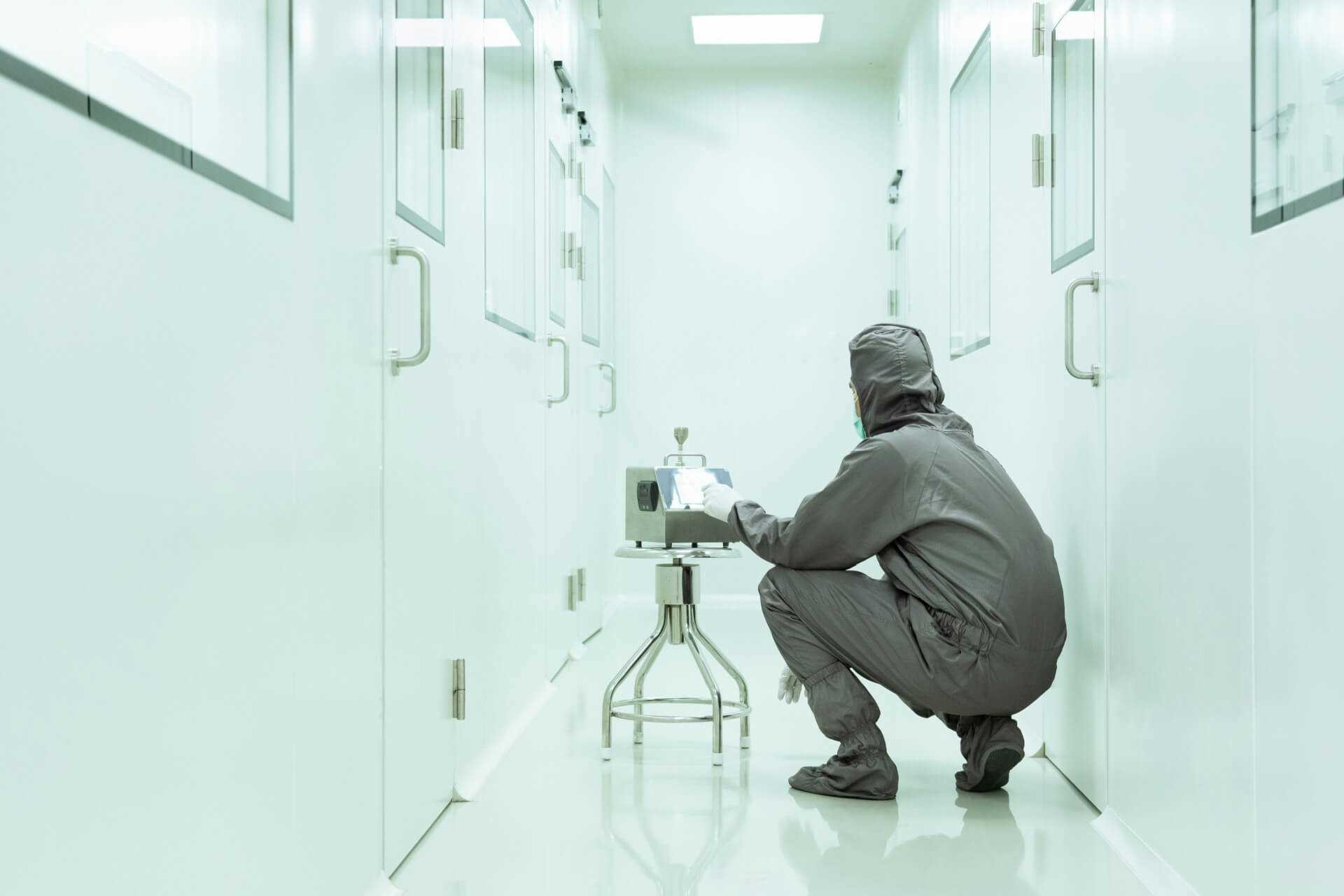
Evaluating Cleanroom Cleaning Chemicals and Techniques
In cleanrooms, where maintaining sterility and controlling contaminants is critical, the choice of cleaning chemicals and techniques plays a pivotal role. This blog post provides a comprehensive evaluation of the different cleaning agents and methodologies used in cleanrooms, focusing on their efficacy, safety, and compatibility with cleanroom standards.
Overview of Common Cleanroom Cleaning Chemicals
1. Isopropyl Alcohol (IPA)
• IPA is widely used in cleanrooms due to its effectiveness in removing residues and its rapid evaporation, which minimizes residue. It’s effective against a broad range of contaminants and is particularly useful for cleaning non-porous surfaces.
2. Hydrogen Peroxide
• Hydrogen peroxide is favored for its strong oxidizing properties, making it effective against a wide range of microorganisms. It is often used in vapor form for decontaminating equipment and surfaces without leaving harmful residues.
3. Bleach (Sodium Hypochlorite)
• While effective for microbial control, bleach is less commonly used in semiconductor and pharmaceutical cleanrooms due to its corrosive nature and the potential for residue. Its use is typically limited to specific areas where microbial contamination is a significant risk.
4. Quaternary Ammonium Compounds
These compounds are effective disinfectants for a variety of surfaces and are known for their low toxicity and good material compatibility, making them suitable for general cleanroom cleaning.
Techniques for Cleanroom Cleaning
1. Wipe Down and Mopping
• The most common method involves using specially designed cleanroom wipes and mops that minimize particle generation. These tools are often used with IPA or other disinfectants to clean surfaces effectively without leaving residues.
2. Fogging and Vaporization
• Techniques such as hydrogen peroxide vapour (HPV) are used for whole-room decontamination. This method ensures thorough surface and air decontamination but requires specific protocols to ensure safety and effectiveness.
3. Automated Cleaning Systems
• Robotics and automated cleaning systems are increasingly being incorporated into cleanrooms to reduce human intervention and improve cleaning consistency. These systems can be programmed to carry out precise cleaning patterns using selected chemicals.
Safety and Environmental Considerations
• Material Compatibility: It's crucial to ensure that cleaning chemicals do not degrade the materials within the cleanroom, such as plastics or silicon wafers, which could lead to further contamination.
• Operator Safety: Proper training and personal protective equipment (PPE) are essential to protect workers from chemical exposure, especially when handling more potent disinfectants.
• Regulatory Compliance: All cleaning chemicals and methods must comply with industry-specific regulations and standards, ensuring that their use does not compromise the cleanroom’s compliance status.
Selecting the appropriate cleaning chemicals and techniques is crucial for maintaining the operational integrity and compliance of cleanrooms. By understanding the properties and applications of various cleaning agents, cleanroom managers can ensure that their environments remain free from contaminants while safeguarding the health of their personnel and the environment.
